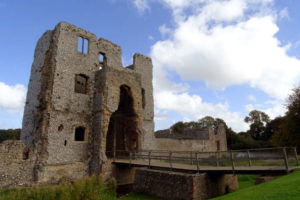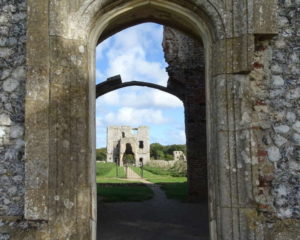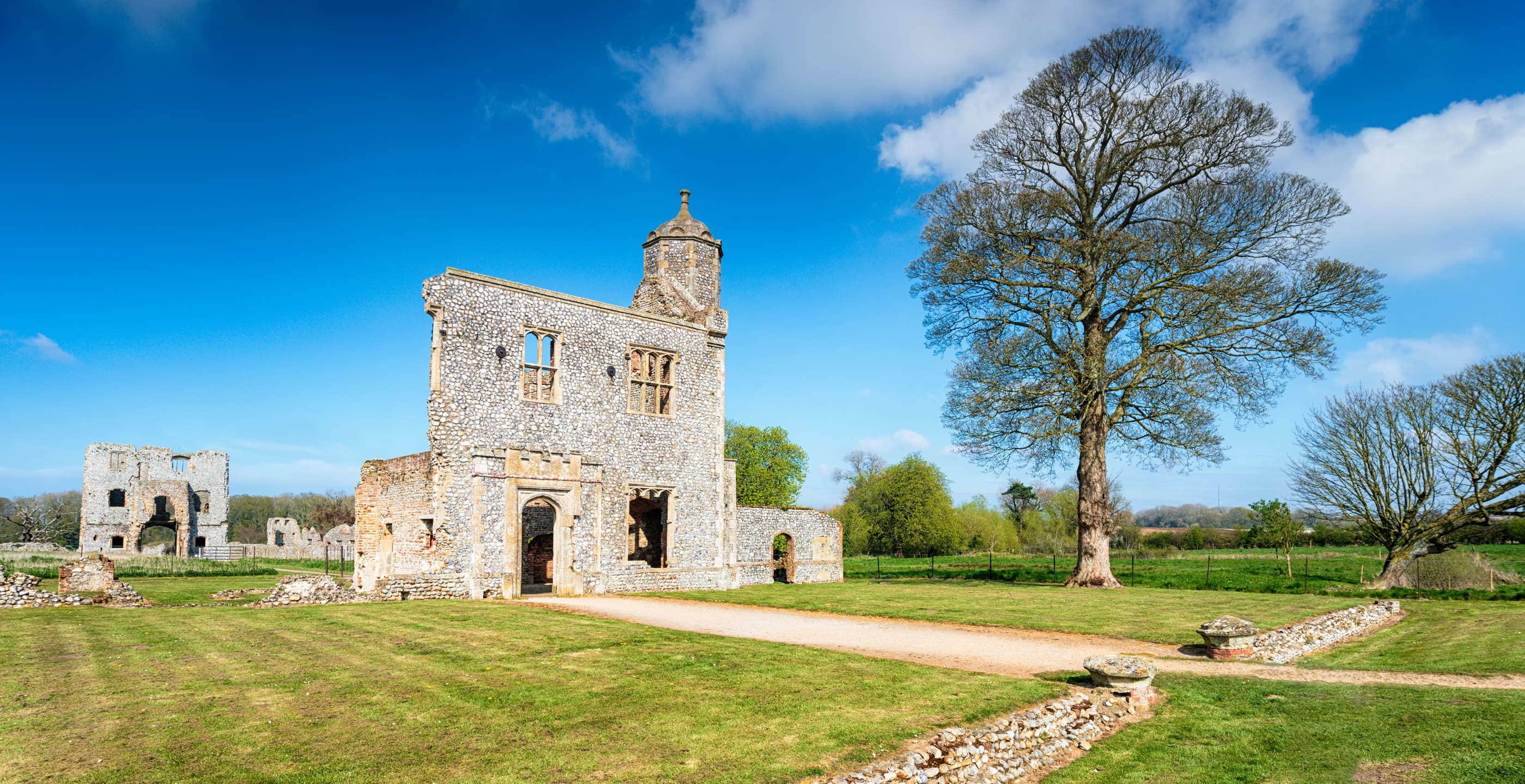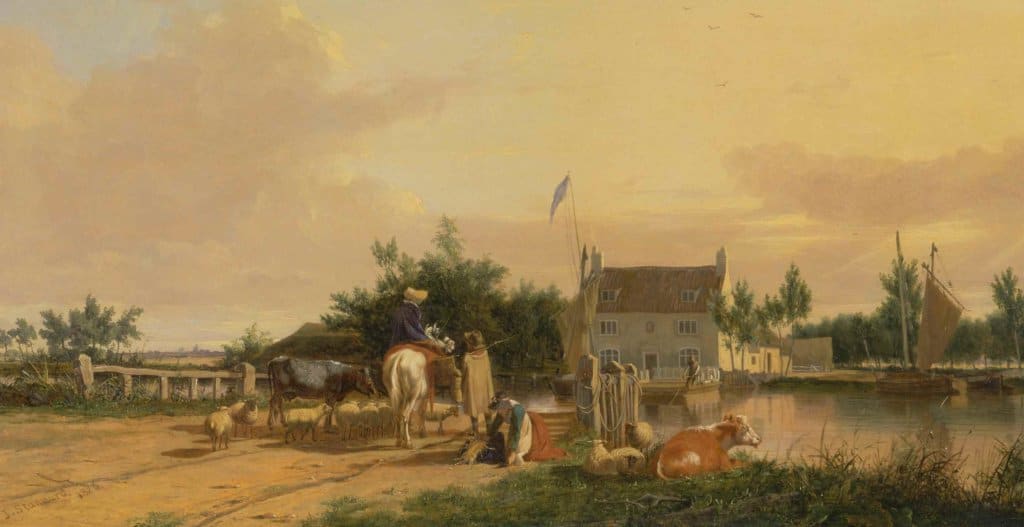Telephone: 0370 333 1181
Website: https://www.english-heritage.org.uk/visit/places/baconsthorpe-castle/
Owned by: English Heritage. Opening times: Open any reasonable time during daylight hours and entrance is free of charge. See the English Heritage website for more information.
Public access: Access to the castle is via gravel path, uneven grass surfaces and a narrow gate. Dogs on leads are welcome.
The ruins of a moated and fortified 15th century manor house. The story of Baconsfield is also that of the ambitious Heydon family, who rose to prominence in the 15th century. Freeman William Baxter acquired the manor from the Bacon family early in the 1400s. The castle was begun by his son John, a lawyer and supporter of the Duke of Suffolk, William de la Pole. John also changed the family name to Heydon to reflect their newly elevated status and to obscure the family’s humble origins.

Above: Baconsthorpe Castle
Although the building began as a relatively simple manor house, a large fortification was planned by both Sir John Heydon and his son and heir, also Sir John Heydon. These ambitious plans reflect the uncertainty of the age. During the Wars of the Roses, the first Sir John was a Yorkist who regularly shifted his political allegiances, gaining a reputation as an unreliable and untrustworthy character. It has been suggested that the family needed a strongly fortified home as a result of his political dealings.
The rectangular castle was therefore set around a courtyard, in typical defensive style, with four square towers at each corner, other than the gatehouse, which is on the south-facing front of the castle. Sir Henry Heydon inherited the castle in 1480, expanding it to the north and east, and adding a curtain wall to the north. A moat surrounds a large area of ground including the castle, and there was also a lake to the east of the castle.

Above: Baconsthorpe Castle



